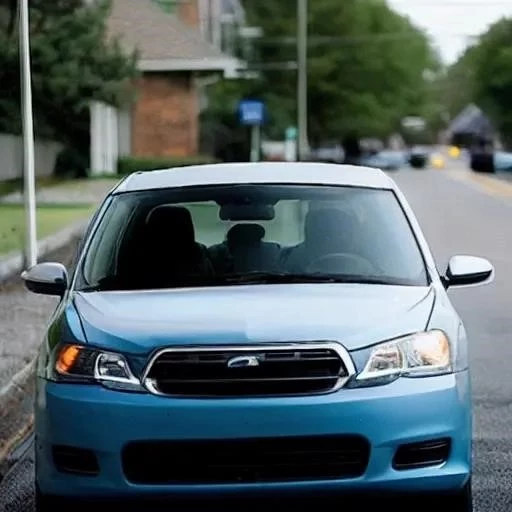Imagine the heart-stopping moment: you step out for just an instant, perhaps to grab a forgotten coffee, and the familiar click reverberates, signifying your car doors have sealed shut. The engine purrs on, a cruel reminder of your predicament, keys dangling tantalizingly on the dashboard. That dreaded scenario, the “car locked while engine running,” is a surprisingly common and incredibly frustrating experience, instantly transforming a routine day into an urgent crisis. For decades, this situation has sent shivers down drivers’ spines, often leading to frantic calls to locksmiths or, worse, desperate measures to regain access.
Yet, a new era is dawning, promising to relegate this automotive anxiety to the annals of history. By integrating insights from advanced telematics and smart connectivity, the automotive industry is proactively developing remarkably effective solutions, transforming moments of panic into mere minor inconveniences. This isn’t just about unlocking doors; it’s about empowering drivers with unprecedented control and fostering a profound sense of security. The days of helplessly watching your car idle from the outside are rapidly fading, replaced by innovative systems designed to prevent, mitigate, and swiftly resolve these all-too-common predicaments;
Essential Information: Navigating a Car Lockout
Understanding the causes, immediate steps, and technological safeguards can turn a stressful situation into a manageable one. Here’s a quick guide:
| Category | Description/Details | Reference/Link |
|---|---|---|
| Common Causes |
| AAA Roadside Assistance |
| Immediate Actions |
| |
| Modern Solutions & Tech |
| PCMag ⎻ Connected Car Explained |
The Evolution of a Problem and Its Ingenious Solutions
Historically, a locked car with a running engine often meant a call to a locksmith, a coat hanger, or even a smashed window – desperate measures born of desperation. However, the sophisticated vehicles gracing our driveways today, while designed for enhanced security, also present novel avenues for resolution. Modern automotive engineering, keenly aware of these everyday dilemmas, has progressively embedded ingenious technologies, turning potential catastrophes into manageable situations. We’re witnessing a paradigm shift, moving from reactive, often destructive, solutions to proactive, digitally integrated safeguards that prioritize convenience and safety.
Telematics: The Game Changer in Automotive Access
At the forefront of this revolution are telematics systems, the unsung heroes of automotive connectivity. Services like General Motors’ OnStar, FordPass, BMW ConnectedDrive, and Mercedes me connect have fundamentally reshaped how drivers interact with their vehicles. Imagine using a smartphone app to remotely unlock your car from anywhere in the world, a capability that just a decade ago felt like science fiction. “These integrated platforms are more than just emergency services,” explains Dr. Anya Sharma, a leading automotive technology analyst. “They are becoming comprehensive digital assistants, offering everything from remote start to vehicle health diagnostics, with remote unlocking being an incredibly effective, yet often overlooked, feature.” This seamless digital integration is precisely what empowers drivers, transforming a potential lockout into a quick tap on a screen;
Beyond Remote Unlocking: Predictive and Preventative Tech
The innovation doesn’t stop at simple remote unlocking. Manufacturers are increasingly incorporating advanced sensor arrays and AI-driven logic into key fob systems. Many contemporary vehicles are now designed to detect if a key fob is still inside the cabin, actively preventing the doors from locking themselves. This proactive approach, preventing the lockout scenario from ever occurring, represents a significant leap forward. Furthermore, the burgeoning field of predictive maintenance and personalized driver profiles, fueled by machine learning algorithms, promises an even more secure future. Envision your car intelligently recognizing unusual patterns – an engine running, no driver present, and keys inside – then automatically sending an alert to your device or even preventing the lock sequence altogether.
Industry Impact and a Forward-Looking Horizon
The ripple effect of these advancements is profound, boosting consumer confidence and reinforcing the value proposition of connected car services. Insurance companies are even beginning to explore incentives for vehicles equipped with such preventative technologies, recognizing the reduced risk of theft or damage. Looking ahead, the convergence of automotive tech with smart home ecosystems could unlock further synergies. Picture your smart home assistant notifying you if your car is running in the driveway with the doors unlocked, or even integrating with your daily schedule to anticipate your needs. The journey toward fully autonomous vehicles, while distinct, also contributes to this narrative of enhanced safety and control, as cars become increasingly self-aware and capable of self-correction.
Ultimately, the distressing incident of a “car locked while engine running” is rapidly evolving from a common bane of motoring existence into a solvable challenge, thanks to relentless innovation. As technology continues its relentless march forward, driven by consumer demand for convenience and security, drivers can look forward to a future where such everyday mishaps are not just mitigated but largely eliminated. The road ahead is bright, promising a driving experience characterized by unprecedented ease, safety, and, crucially, peace of mind. We are truly on the cusp of an era where our vehicles are not just modes of transport, but intelligent partners, proactively safeguarding our journeys.






